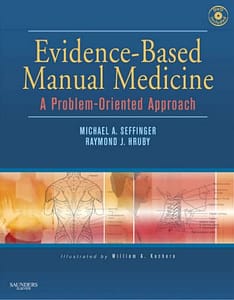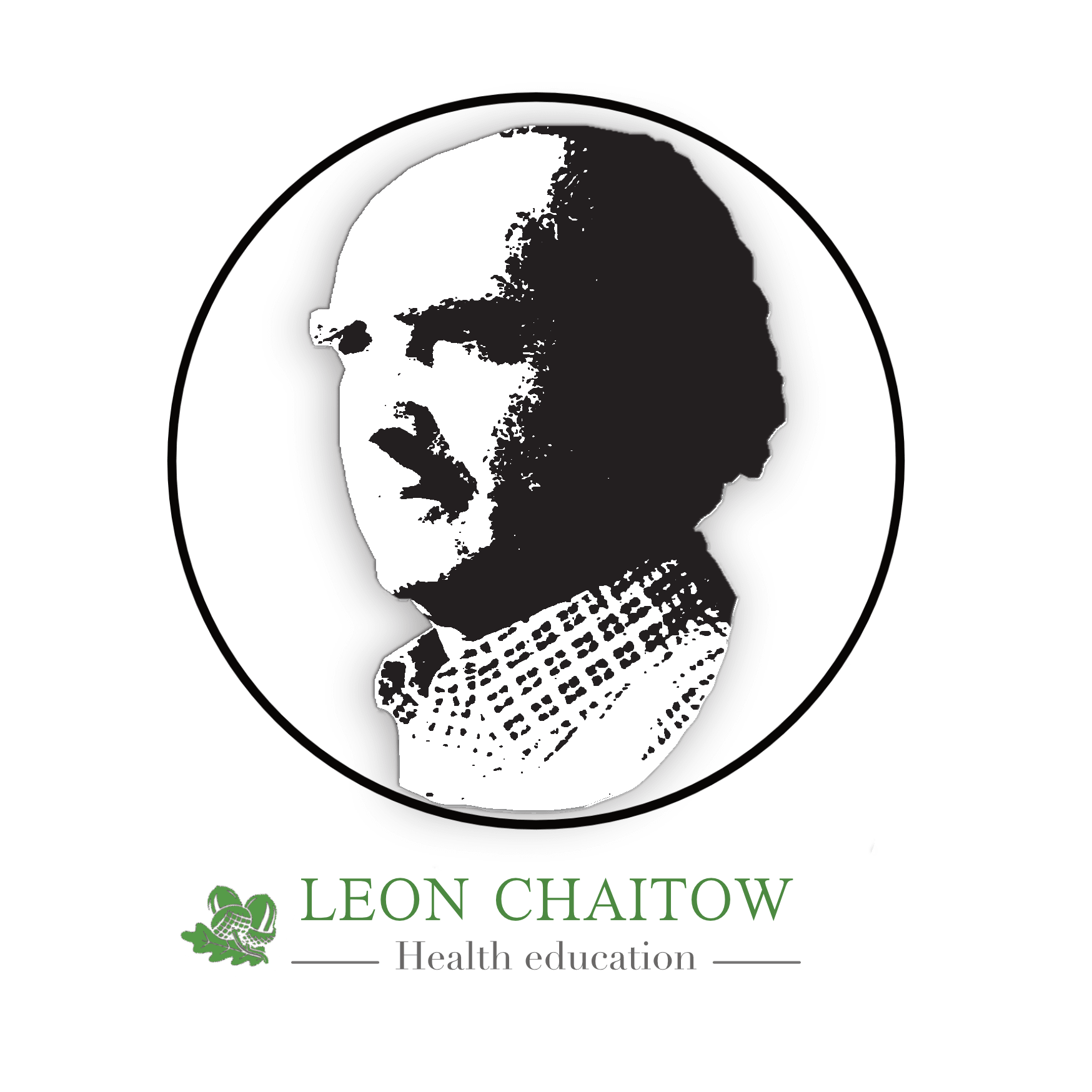 Evidence Based Manual Medicine, by Michael A. Seffinger DO FAAFP and Raymond J. Hruby DO FAAO
Evidence Based Manual Medicine, by Michael A. Seffinger DO FAAFP and Raymond J. Hruby DO FAAO
Foreword by Leon Chaitow
Professional organizations, government agencies, insurance companies, and the general public now demand that clinical decision making by health care providers should rely (as far as is possible) on evidence deriving from research. Comprehensive approaches to clinical problem-solving and therapeutic planning, that are major features of this book, offer physical/manual medicine practitioners therapeutic choices based on, or that are informed by, evidence.
Major features of this book include descriptions of detailed approaches to clinical problem solving. This provides physical/manual medicine practitioners with excellent resources with which to meet current requirements that they meet standards of evidence-informed reasoning and planning.
The therapeutic decision-making processes necessary to meet these requirements may involve overcoming a number of obstacles, including evaluation of apparently conflicting evidence as to the value, and/or efficacy, of long-used procedures of assessment and treatment.
For the health care provider, the old adage that lack of evidence of efficacy does not equal evidence of lack of efficacy, can be comforting. For the reality of clinical practice and decision-making involves uniting and integrating sound research evidence – where it exists – with clinical experience. The human dimension in all this is also an essential part of the equation, with the patient’s condition, fears, ideals and wishes all forming integral features of the process involved in evolving safe and effective treatment strategies.
These considerations are summarised by Sackett’s (1996) observation that, “evidence-based medicine is the conscientious, explicit and judicious use of current best evidence in making decisions about the care of the individual patient. The practice of evidence-based medicine means integrating individual clinical expertise with the best available external clinical evidence from systematic research. ”
At the very least, when there exists unequivocal evidence of lack of benefit relating to a particular treatment procedure or approach, or of overwhelming evidence of the unreliability of a specific assessment method, this should inform clinical choices. Using evidence in this way should help to weed out use of inappropriate or ineffectual methods and modalities. However research evidence alone is unlikely to offer firm directions for choosing which manual – or other – method should be employed in any given case. Examples abound of modalities where research studies offer conflicting evidence – either because of flawed research, or because of built-in variables that make comparisons between conflicting outcomes confusing and possibly unreliable. What ‘evidence’ is the practitioner to choose then, other than that based on clinical experience?
Even when evidence is unchallenged, numerous therapeutic choices still remain. For example the type of training (osteopathic, chiropractic, physical therapy etc), as well as the skill and experience of the practitioner, together with the condition and preferences of the patient, all factor in the determination whether – for example – a restricted spinal segment should be treated with a high velocity low amplitude (HVLA) thrust, or by means of soft tissue techniques, or exercise, or by means of some other modality altogether.
The reality is that different procedures, modalities and techniques have all been shown to result in therapeutic benefit when delivered to appropriately identified and categorized conditions.(Scott-Dawkins 1997, Murphy 2000)
Additionally the therapeutic objectives in any given case/situation can leave open a wide range of choices. Information gathered from the individual’s history, presenting symptoms, as well as observation, assessment, palpation, and where appropriate, evidence from scans and other tests, filtered through clinical experience, should inform the practitioner as to what needs to be achieved in order to enhance endogenous self-regulatory processes. Such objectives may include reduction of pain, increased range of motion, greater stability, or a modification of some other feature of the patient’s condition.
When it comes to application of manual modalities, combinations of modes of the loading of tissues (shear force, translation, compression etc), varied by the degree of force employed (light, moderate, heavy etc), direction of force (direct towards the restriction barrier, or indirect involving disengagement from the barrier, or alternating combinations of these), as well as the amount of time involved in force application (continuous, rhythmic, brief, lengthy etc), the rate at which loads are applied (rapidly, slowly, variably), the number of repetitions, whether the method is passive or active – or involves a combination of patient and practitioner effort, as well as which tissues are involved (muscle, fascia, scar tissue, joint etc), and their properties (inflamed, flaccid, fibrosed etc) – along with practitioner intent – creates a huge range of variables that make up the orchestral variety of the many therapeutic options open to the practitioner. (Lederman 2005, Mehling 2005)
Some, but by no means all of these variables have been researched to the degree that evidence can inform therapeutic choices, however all have been studied clinically for generations, and so can contribute to expert opinions that form the basis for research inquiries. Thus successful clinical experience, passed on from one generation to the next, offers valuable, and often employed, ‘evidence’.
Fortunately, both forms of evidence – that derived from research and that emerging from expert opinion – are provided in this book, making it a resource that can aid both the student, and the experienced clinician, towards the formulation of informed clinical decisions and therapeutic strategies.
Systematic reviews and meta-analyses are often used to culminate the results from several clinical trials in order for experts to formulate practice guidelines. Although useful, these practice guidelines cannot become strict protocols, since the clinical trials and systematic reviews upon which they are based are not perfect representations of clinical practice where patients often present to practitioners with co-morbidities and complex multi-factorial etiologies of their musculoskeletal complaints.
As Herbert (2007) points out:
“Clinical trials would be a simpler enterprise if patients presented with homogenous clinical presentations to which we could assign simple diagnoses, if therapists uniformly applied standardised therapies using mechanistic decision rules based on objective and universally accepted criteria, and if patients responded in more or less uniform ways to intervention. Unfortunately, the clinical presentations for each diagnosis are varied, diagnosis can be difficult, therapists choose to intervene very differently for the same condition or presentation, and patients’ outcomes often appear hard to predict. For almost any clinical problem, clinical presentations, diagnoses, interventions and outcomes are heterogenous. This makes clinical trials difficult. Clinical research is a messy business.”
Fortunately the authors of this text while referring to the results of systematic reviews, also include references from other clinical trials, outcome studies and expert panel opinions in their recommendations. Shortcomings of the research and guidelines are pointed out in each chapter, by identifying the research that needs to be done next in order to clarify clinical decision algorithms and practice recommendations.
The epidemiological sections in each problem oriented chapter are valuable in that they portray key aspects and characteristics of those patients who tend to develop particular patterns of musculoskeletal dysfunction. It is axiomatic that each individual needs to be evaluated by means of a comprehensive history and careful physical examination of their present illness, in order to delineate all the factors at play in their presenting condition. The differential diagnosis is considered for each problem, alerting the practitioner to the fact that each type of potential etiology must be considered and discounted en route to determining precise causes of the problem. It is only then that specific manual treatment can be selected and delivered with confidence of securing functional improvement, pain reduction and ideally, resolution of the problem.
For example, two seemingly similar sets of symptoms (‘low back pain’) might have completely different etiological and aggravating features. These might be determined to be likely to benefit from quite different therapeutic and rehabilitation strategies – one possibly requiring deactivation of myofascial trigger points followed by postural re-education, with the other calling for joint mobilization achieved by high velocity thrust methodology, supported by appropriate soft tissue normalization, possibly involving stretching and/or core stability training. Treatment always should be individualised and patient-centered.
Peters (2006) has summarised a part of the way forward as we seek evidence to inform therapeutic choices: “The notion that osteopaths offer non-specific treatment for nonspecific mechanical back pain is less tenable now that good research has shown how more precise diagnosis is often possible, and that treatments differentiated accordingly lead to good outcomes (Niemier et al., 2005). The contrary assumption—that manipulative technique effects are nonspecific, and that most back pain has no specific cause—if applied to medical research would be the equivalent of researching the effect of a randomly chosen drug on an undiagnosed symptom! The ADTO (Assessment/Diagnosis—Treatment/ Outcome) approach recommended by Donelson (2004) will be crucial to evolving back pain research methods that are genuinely fit for purpose.”
This book has been successfully compiled to meet the need for evidence-based therapeutic approaches that are ‘fit for purpose’. It offers detailed, comprehensive, problem-solving clinical descriptions, more than ably supported by excellent illustrations, photos and by DVD sequences of assessment and treatment methods. In doing so it focuses on a wide range of conditions, so providing a resource of immense value. As a result evidence-informed manual medicine practice becomes more readily achievable, to the benefit of patients and practitioners alike.
References
Donelson R 2004. Evidence-based low back pain classification. Improving care at its foundation. Eura Medicophys. 40(1):37–44.
Herbert R 2007 Dealing with heterogeneity in clinical trials. Manual Therapy 12(1):1-2
Lederman E 2005 Science and practice of manual therapy (2nd edition) Churchill Livingstone, Edinburgh pp 87-224
Mehling WE, Hamel KA, et al 2005 Randomized, Controlled Trial of Breath Therapy for Patients With Chronic Low-Back Pain Altern. Ther. Health Med. 11(4):44-52
Niemier K Seidel W Ritz W et al., 2005. Introduction and Evaluation of a Multiprofessional Assessment System for the Differential Diagnosis of Chronic Musculoskeletal Pain Syndromes. Journal of Osteopathic Medicine (27):71–80.
Peters D 2006 Letter to the Editor Journal of Bodywork and Movement Therapies 10(4):314
Rosner A 2003 Fables or foibles: inherent problems with RCTs, J Manipulative Physiol Ther 26: 460–467
Sackett D Rosenberg W Gray J 1996 Evidence based medicine: What it is and what it isn’t – It’s about integrating individual clinical expertise and the best external evidence British Medical Journal 312(7023):71-72
Scott-Dawkins C 1997 Comparative effectiveness of adjustments versus mobilizations in chronic mechanical neck pain. Proceedings of the Scientific Symposium. World Chiropractic Congress June 1997 Tokyo
